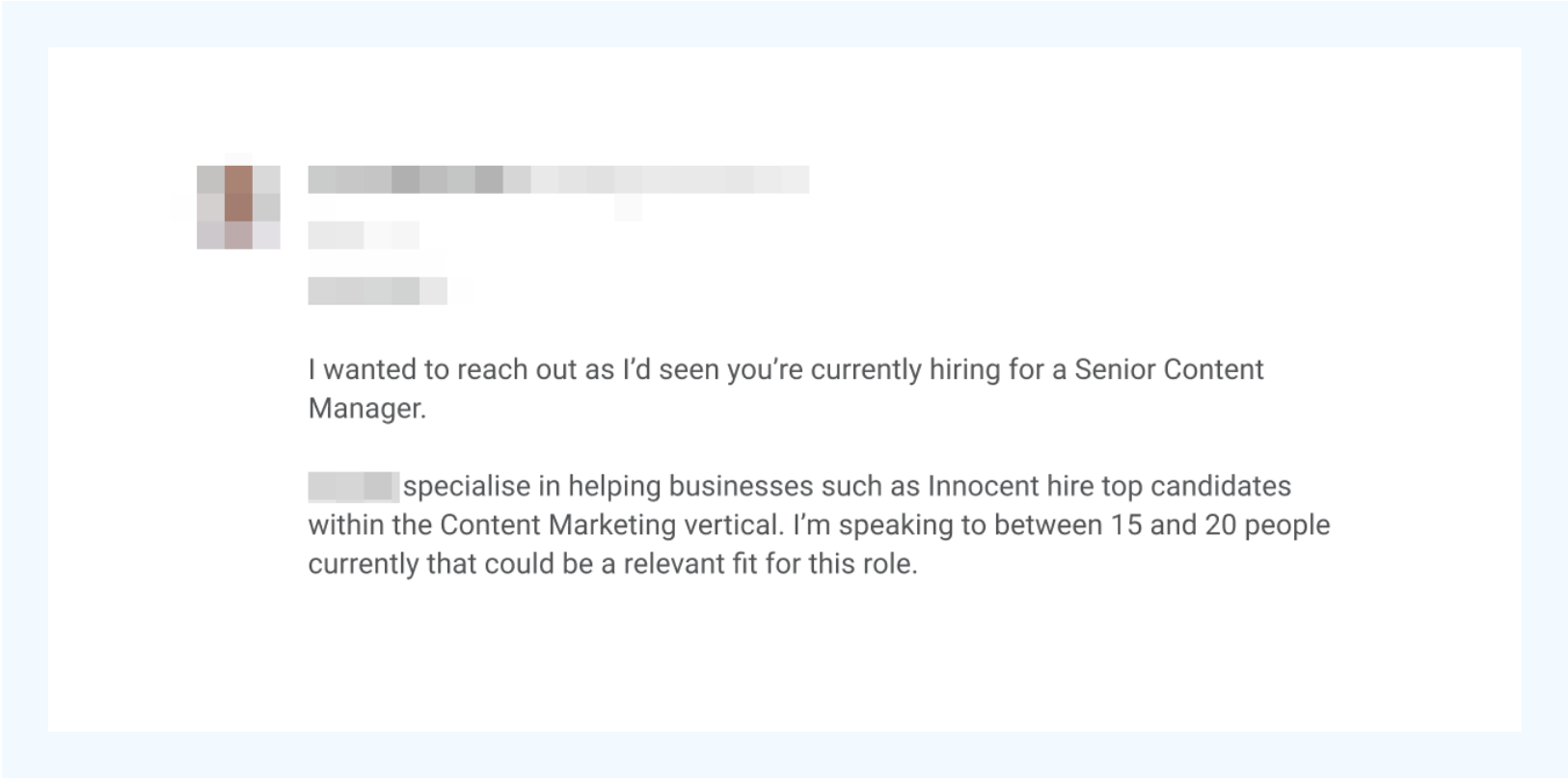Three Cold Email Use Cases For Job Posting Data

Job postings can tell you quite a bit about a business: where a company operates, which markets it’s targeting, what competencies it’s currently missing, if it’s growing or not, and much more.
Every job ad contains dozens of data points you can use to research your prospects. But how many job postings can you analyze manually? If you want to use job postings for outbound prospecting, you need something automated.
That’s exactly why we built Signals. In this article, I’ll show you how you can use Signals to send cold emails that get amazing results.
Why job data is useful
The more you know about your prospects, the easier it is to contact them with a relevant message.
That’s why selling to inbound leads is easier (as long as they’re qualified.) By getting in touch with your business, inbound prospects explicitly express a specific business need.
When you’re running email outreach at scale, you assume your email will be relevant for the recipient based on their job title, location, industry, etc. In other words, you profile people based on how they “look” from the outside, and assume they face similar issues in their professional lives.
And while this method can work, it also means that some of your emails will fall flat.
On the other hand, you can also ground your prospecting in intent (behavioral) data. Intent data captures actions that implicitly or explicitly point to a specific business need. And job postings are a great source of intent data.

When a company publishes a job posting, it explicitly indicates a need for a specific skill set, a desire for growth, a strategic direction, and more. Tapping into that information can make it much easier to find people and companies that genuinely need your solution.

What you can learn from job postings
Let’s break down a typical job posting to see what can be learned from its elements:
Job title
The job title gives a general description of the desired skill set.
However, it can also indicate the team structure within the company. For example, suppose a company is looking to hire a content operations manager. In that case, it either has at least several content specialists working in house, or it has a content strategist extensively working with external contributors.
Finally, the job title indicates the seniority level, which can also be informative about the team structure.

Company overview
The company overview can provide crucial information about the company type. It typically contains a self-assessed industry alignment, details about the provided services, and some basic information about the business model.

Looking at the example above, we can infer the following about the company:
- It’s a B2B SaaS company,
- The company is using a subscription model,
- It operates in the car wash industry,
- It’s a small team,
- The company went through two series of fundraising, with notable investors like Bedrock Capital.
Job location
Most job postings specify whether the job is remote, hybrid, or must be performed onsite.
This allows you to find companies based on where they are based, how they hire, whether or not they have psychical locations, etc.

Job description
The job description is usually full of useful information.

Looking at the example above, we can learn or infer:
- The specific responsibilities involved in the role (cold calling, networking, referrals, personally managing relationships),
- The company’s value proposition (helping businesses shift away from plastics to alternatives),
- The compensation scheme (salary-based, commissions without upper limit),
- The target market (the US).
You can also sometimes find information about:
- The company’s org chart,
- Their tech stack,
- Their HR policy.
Published date
Finally, it can be useful to know when a job posting was posted.

For example, you might be interested in finding only recently published positions to act on the urgency, or ones that were published months ago to reach out to the hiring manager.
Use cases for job data
Find companies that need your solution
You can use a job posting to identify companies with an explicit need aligned with your solution, then contact the company and position yourself as a potential solution.
There are multiple possibilities here.
If the job posting describes a future employee who would need your services when employed, you can contact the hiring manager to be the first in line when a need for your services becomes a priority.

If you provide HR services, you can offer to assist the hiring manager on their candidate search.

It may also be viable if you provide an alternative to hiring a full-time employee – for example, when you have a product that automates some of the projected responsibilities.
Here's how to use this tactic:
First, you need to create a Signal that looks for companies with a problem you're solving. The details highly depend on your solution, but here's an example: if you're selling a Shopify plugin, you could look for companies hiring Shopify developers like so:

Then, once your Signal is configured and saved, you should go through the companies surfaced by Hunter and choose the most relevant ones.
Now it's time to contact these companies. There are two ways to do it:
- For some job postings, the hiring manager’s name (or even email address) is mentioned in the job description.
- If no contact information is provided in the job posting, you can always use the Domain Search for the given company and look for the best fit, or even send an email to a generic address (like hello@company.com) and ask for a referral.
Contact fresh hires
Contacting someone shortly after they started a new position can be very successful for two reasons:
- You can land in their inbox before it’s overcrowded, and as they still have the mental space and willingness to set up their work from scratch,
- You can easily personalize your email, congratulate them on their new role, and treat it as an excuse to contact them.
For example, if you were selling an educational platform for BDR teams, you could contact sales managers who were just hired:
Set up a Signal looking for sales manager job postings from companies in your ICP published in the past three months. (You can choose a shorter timeframe depending on your industry – adapt it to the project length of the hiring cycle.)

After you create your Signal, review the results and mark all relevant companies with a like.

After you narrow down your account list, look for their fresh hires on LinkedIn.

Look for their email using the Email Finder.

Then, contact them with a relevant message.

Alternatively, find the right person to contact at the target company using the Domain Search and ask if they managed to fill the role.
Contact users of competing or partner products
Job descriptions typically mention a range of products and services the ideal candidate should be familiar with – this is especially true for jobs in the tech sector.
With Signals, you can filter job postings by keywords in the job description and find companies that use (or plan to use) a given tool.
This can help you reach companies that use a competing tool and try to offer your solution as an alternative (e.g., find HubSpot users and suggest an alternative CRM that would be a better fit) or a tool that you integrate with (e.g., find companies using WordPress and advertise your WordPress plugin to their newly hired developer.)
Here’s how:
- Set up a Signal, configure it to target your ICP, and use description keywords for the relevant products.

2. Review the list of companies you find, and look for the email addresses for the relevant ones.

3. Contact the right person with your offer.

Wrapping up
Job postings are an excellent way to find prospects with an intent to solve the problem you're solving, because:
- It's scalable,
- Job data is partially structured,
- Companies express a wide variety of their needs in their job postings (often without knowing it.)
Thanks to Hunter Signals, you can now easily browse thousands of job postings. And even if you're not sure how you might use them in your outbound motion, give Signals a try! I'm sure you'll get plenty of ideas after browsing a couple of job ads posted by companies in your ICP.




 Send cold emails with Hunter
Send cold emails with Hunter